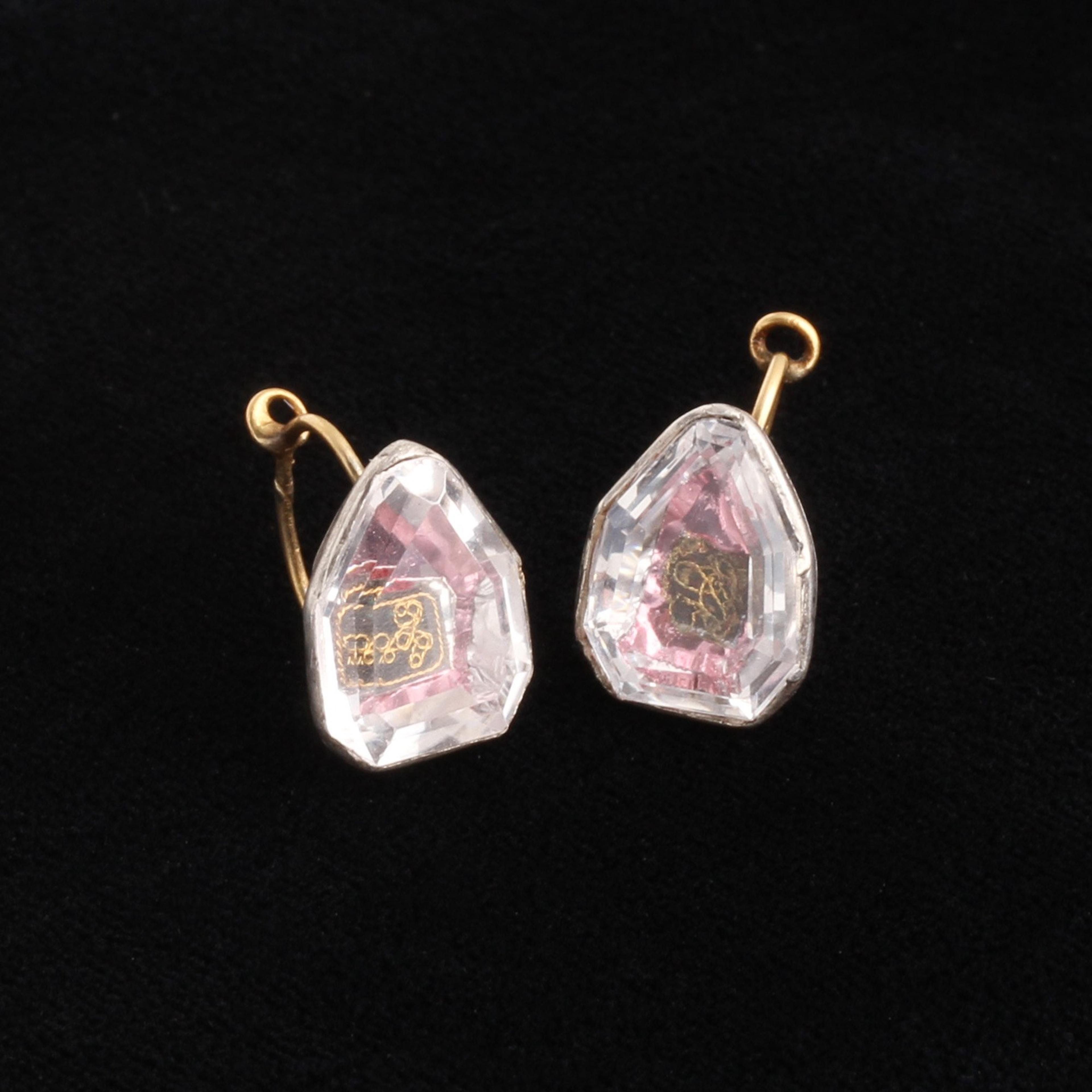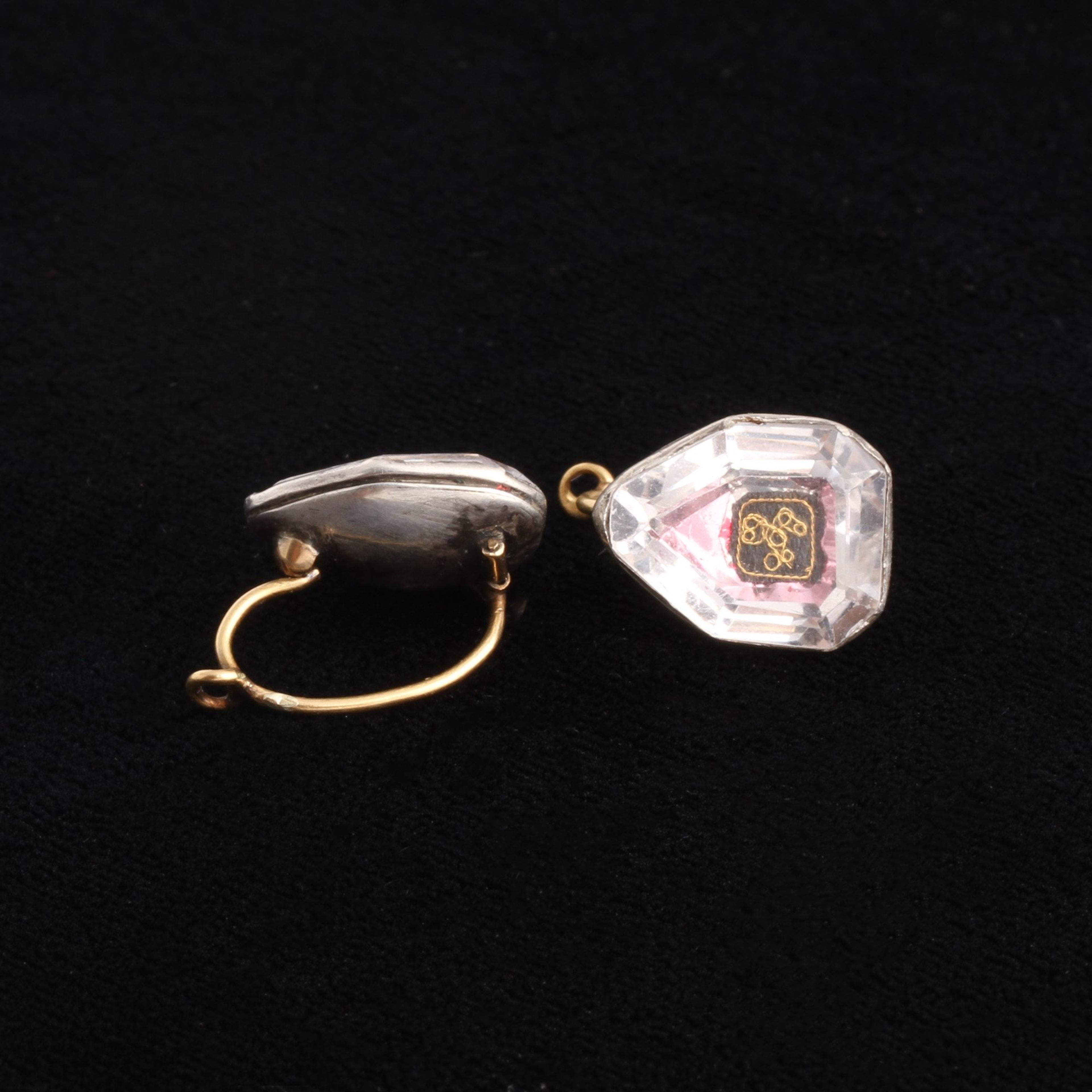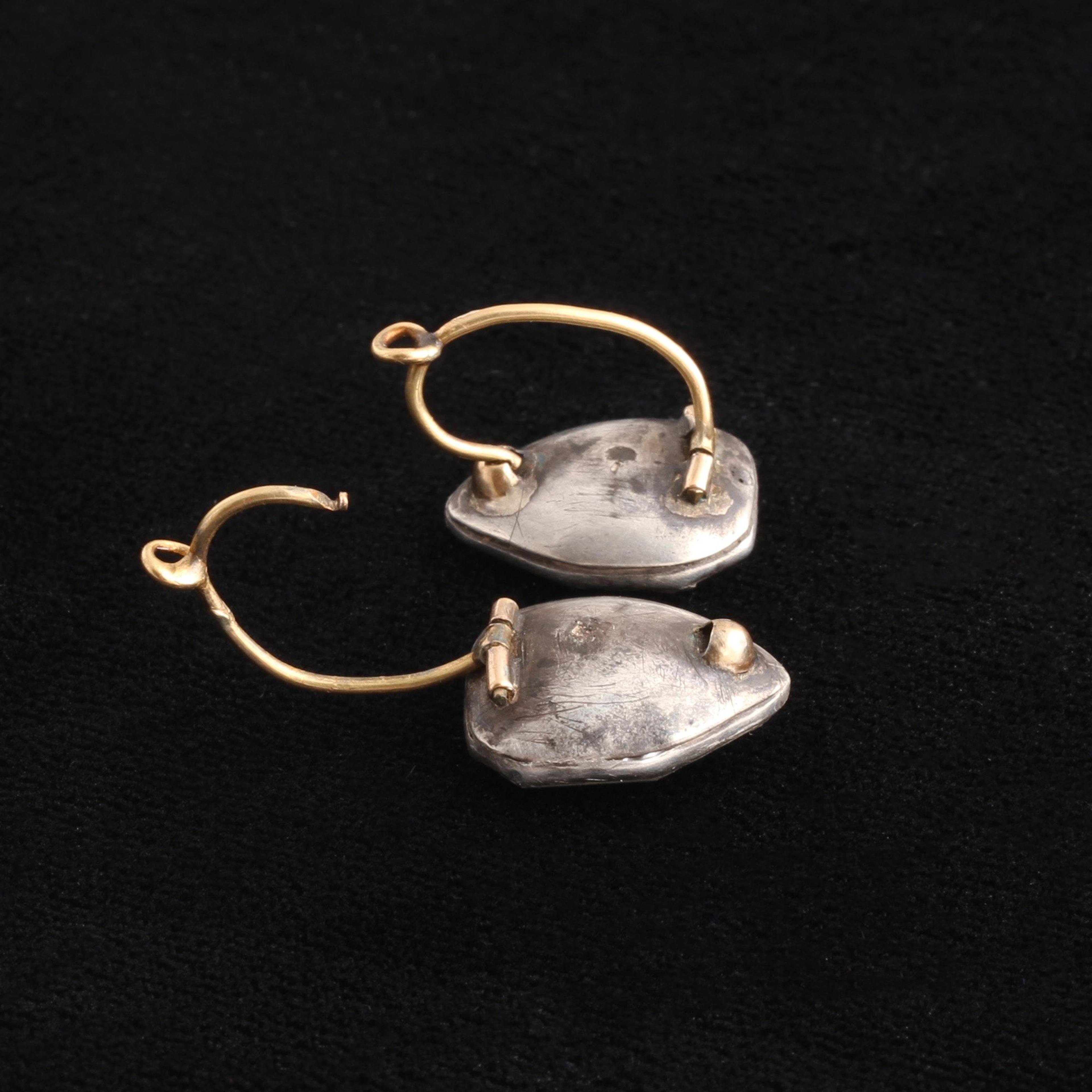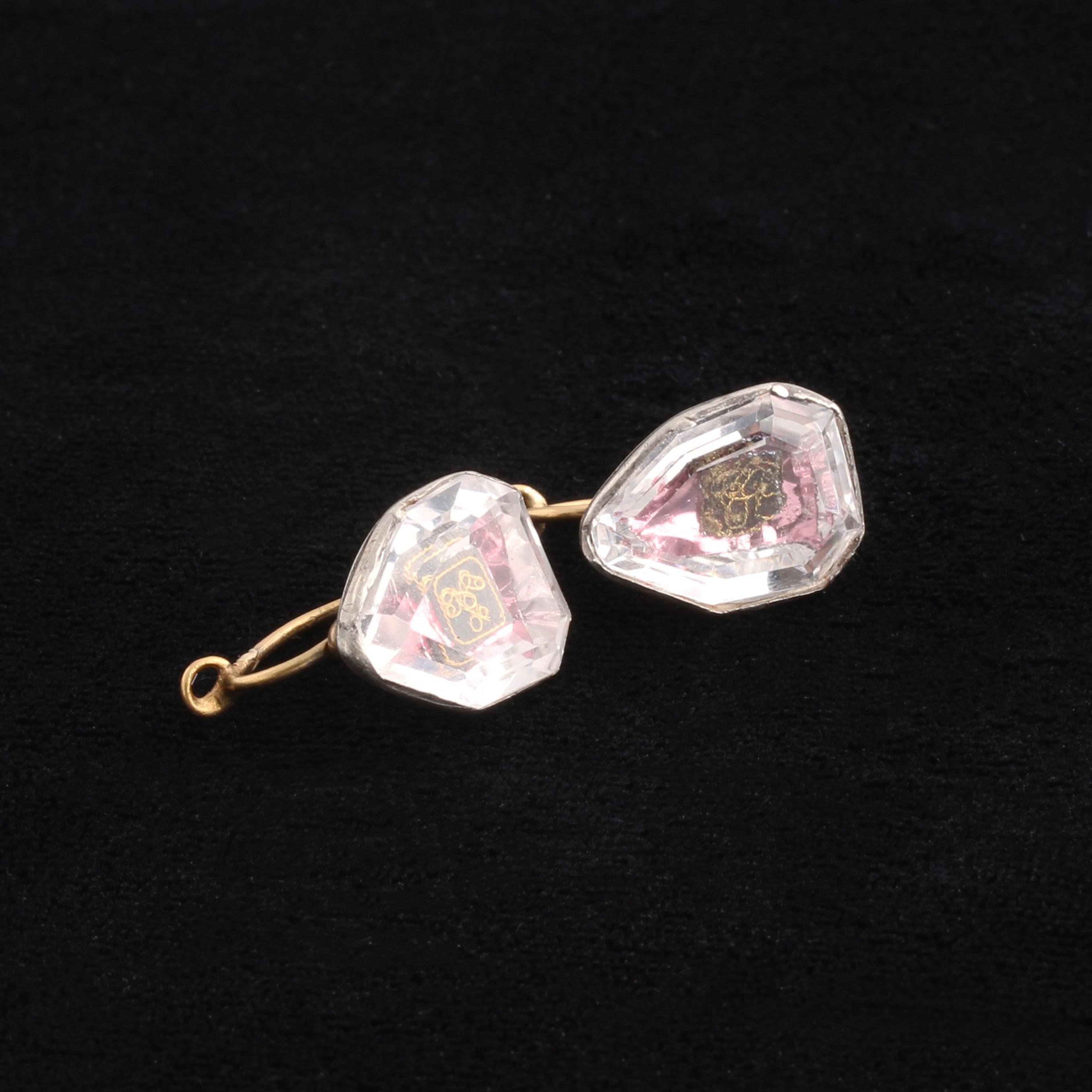The name "Stuart crystal" derives from the jewelry made and worn by loyalists to the Stuart monarchy after the execution of King Charles I in 1649. These Royalists memorialized the martyred king by wearing jewelry with his likeness, a lock of his hair, or his initials rendered in gold wire cipher, set under flat-topped faceted rock crystal (ergo "Stuart crystal"). This jewelry, though originally aligned with support of the monarchy, over time became more personal in nature, and the later examples might feature the cipher or hair of the owner. These earrings are a beautiful example of the style, they feature pink foiled backings with a square of plaited hair surmounted by a gold wire cipher set under rock crystal. Originally these earrings were probably the pendants of a pair of drop earrings. They appear to have been converted into shorter earrings at some point in the 18th or early 19th century judging by the style of the high karat back-to-front wires.
thedetails
- Materials
silver, 22k gold wires (tests), crystal, pink foil, hair, gold thread ciphers
- Age
c. 1700
- Condition
Very good - these were probably the pendant bottoms of a pair of drop earrings converted into shorter earrings at some point in the 18th or early 19th century judging by the back to front style ear wires and karat of gold used (22k)
- Size
1/2" length measured from the top of the wire, 1.43cm x 1.11cm crystals
Need more photos?
Send us an email to request photos of this piece on a model.
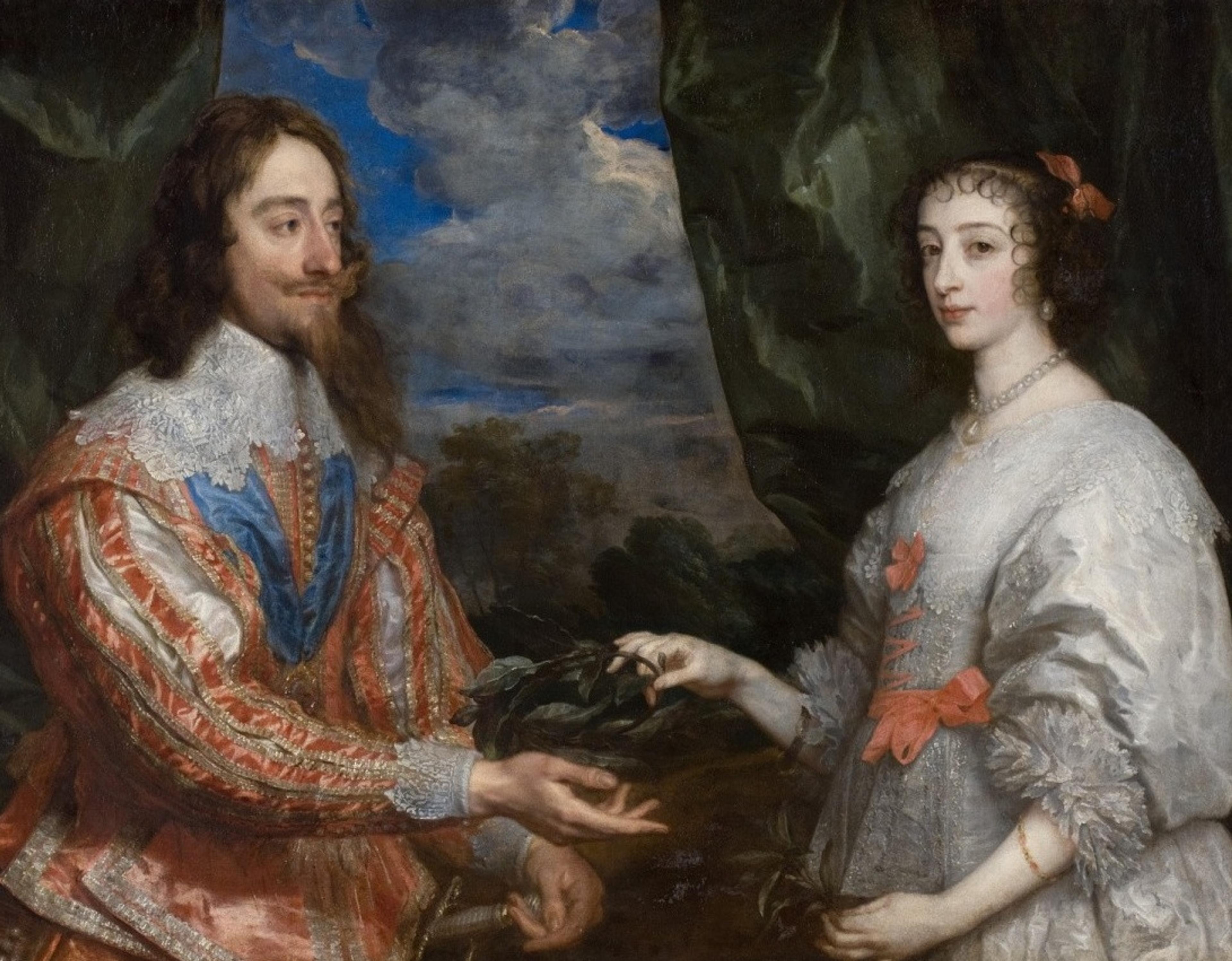
Aboutthe
StuartEra
1603 — 1714
A new era dawned when Queen Elizabeth — the last Tudor monarch — died without an heir. The monarchy was temporarily displaced by the Commonwealth of England from 1649 to 1660 by Oliver Cromwell, but was restored — aka "The Restoration" — as Charles II was invited to take the throne. His father, Charles I, had been beheaded in 1649, and most of the jewelry we see from this period was at least stylistically related to this controversial political event. During this time, discoveries and innovations transformed England and Scotland, which were conjoined after a long period of feuding. Coffee became a new trendy beverage, with 600 coffeehouses in London all catering to a different type of clientele. This imported novelty beverage was possible because of the UK's rapidly expanding worldwide trade network. Not yet interested in acquiring territories, the island nation focused instead on making a fortune exporting wool and importing goods like slaves, sugar, and tea. Everyone (except the enslaved people, of course) benefited from the new merchant class that arose, and in the process the Royal Navy became the most powerful in the world. The look of London changed, too — after the Great Fire of 1666, Christopher Wren was hired to rebuild the city's damaged churches, with his greatest accomplishment being St. Paul's Cathedral.
